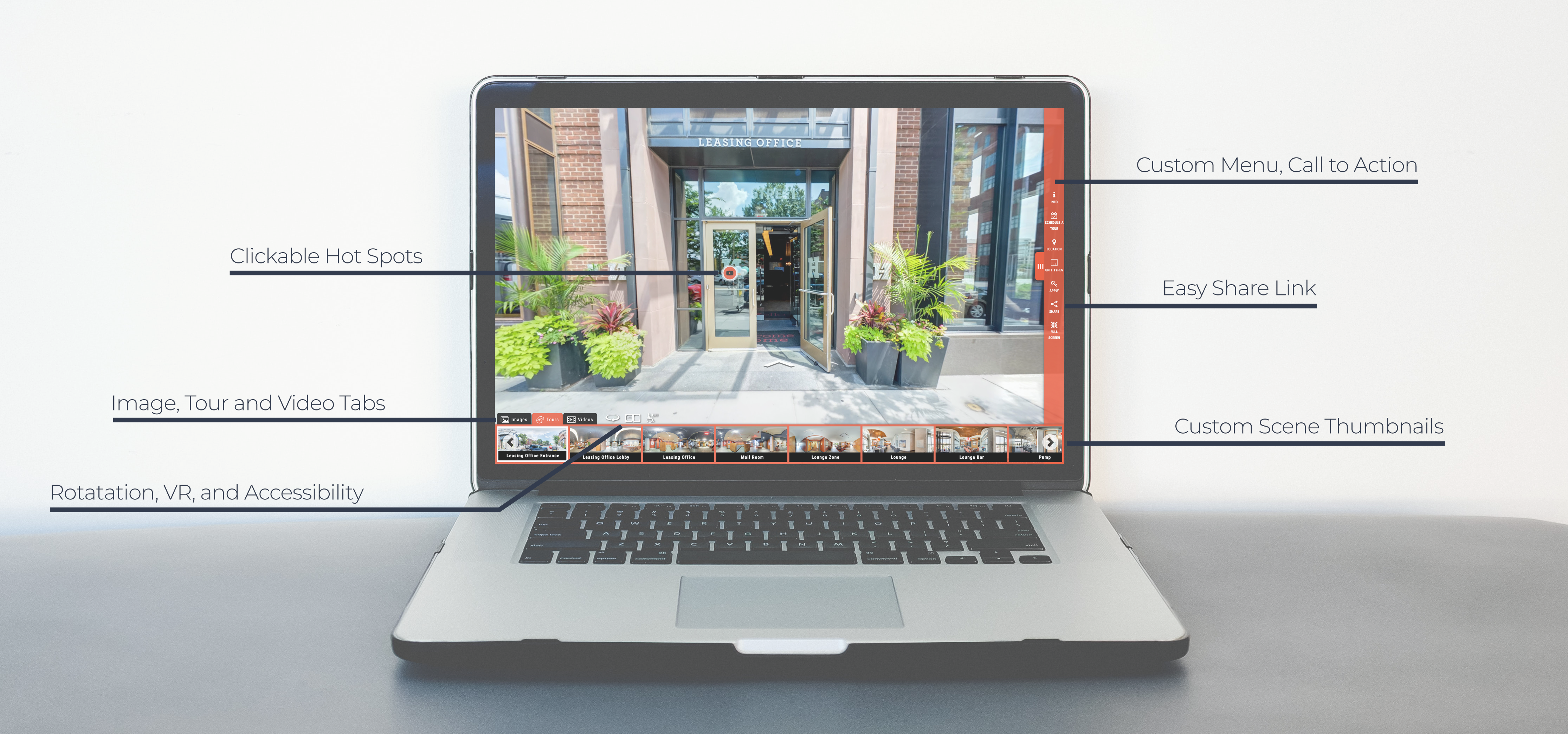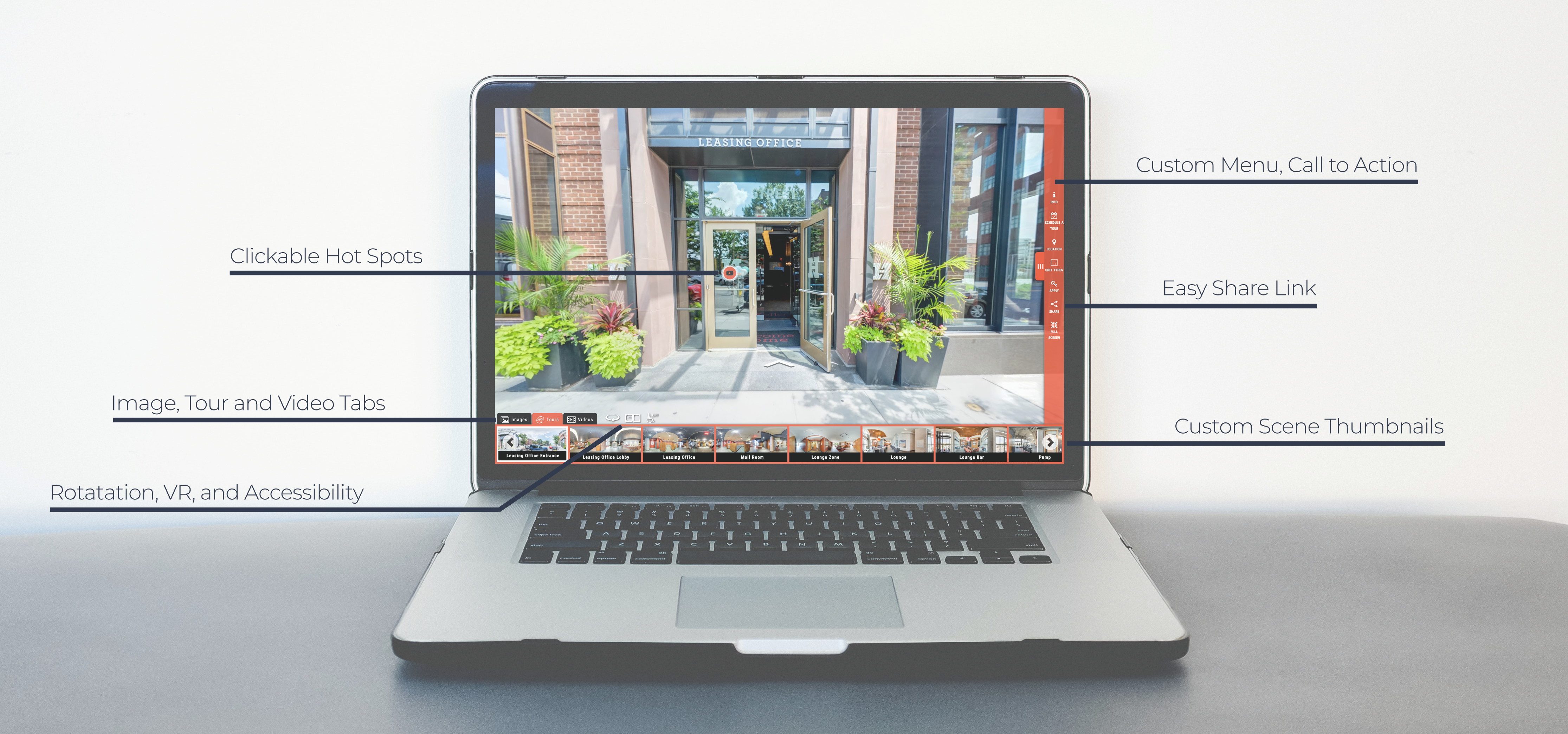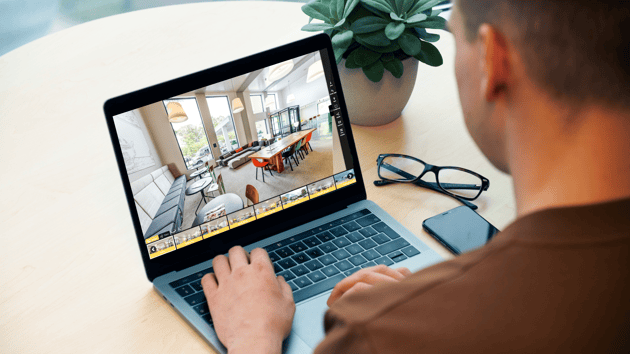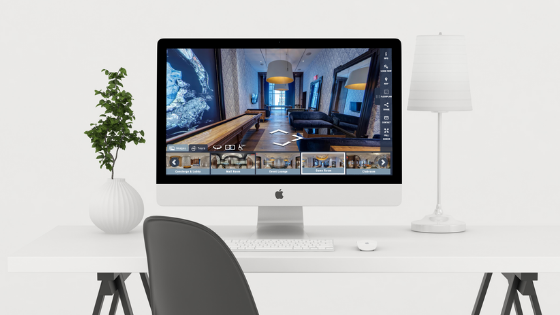5 Leasing Agent Training Tools You Need to Succeed
Leasing virtually can be a bit of an adjustment for experienced and new multifamily professionals. That’s why we’ve put together a list of leasing...

There’s no shortage of benefits virtual tours can provide in real estate.
Not only do renters service them, but property managers can learn and leverage them just as well. Read below for the property manager’s guide to virtual tours.
First and foremost, as a property manager with the responsibility to oversee community functions and relay information to potential prospects, one must familiarize themselves with their property tour.
To master your virtual tour, you must learn the ins and outs of this tool, its features, and how it can be shown in the best light.

It’s easy to say that just going through your tour and its functions will help you understand it better, but it won’t make you an expert.
See below for things you should consider when working with your property virtual tour.
Asking yourself these questions when learning to work with your virtual tour will help ensure everything functions as you’d like and you are confident your tour is an accurate and informative alternative to an in-person tour.
Learn more about what you can do with a virtual tour from LCP Media.
Attracting new prospects to an apartment community is a massive part of being a property manager.
Although marketing professionals will receive the bulk of that duty, there are ways property managers can also highlight their property tours around the community to build awareness.
Whether digitally or out of home, below are a few ways to get the word out about your new digital tool.
Consumers love virtual tours—in fact, many often prefer businesses that offer them.
By simply getting the word out about your new digital tool, renters will surely gravitate towards it.
Perhaps the most critical step, property managers should prioritize making their virtual tour part of the leasing cycle.
By immediately informing renters that your property offers a virtual tour - either via phone call or email - you are giving them options based on their circumstances.
Ensuring prospect comfortability, especially in 2020, will not only encourage more people to go on your virtual tour, but it will also help you win brownie points for being accommodating during difficult times.
In addition, a virtual tour can be used to pre-qualify renters when they inquire about your community.
This tactic provides a head start to integrating prospects into the leasing cycle, and it also incites a sense of urgency in renters.
Lastly, by integrating applications within your virtual tour, renters will be encouraged to take action the moment they are finished touring.
Overall, this strategy should be mandatory for property managers because it’s not only result-driven but also streamlines the leasing process.
Virtual tour statistics show that virtual tours keep people on your website 5-10X longer—not to mention prospects are 130% more likely to book based on a virtual tour.
As stated above, transparency and a personable experience are important to renters' decision-making process.

With that being said, to optimize the renter's home search experience as well as increase the chances of converting, encouraging prospects to schedule virtual tours will be a top priority.
See below for tips on getting prospects to schedule more guided tours.
Prospects are already in favor of virtual tours—getting them to schedule a guided tour can be the difference between them signing a lease or opting for local competition.
| Related: 3 Virtual Tour Ideas for Apartments in 2021
Hiring new property managers amidst a pandemic could lead to potential obstacles regarding effectively learning about a community.
Luckily, virtual tours can work as a leasing agent training tool.
Due to informative features and interactive tools, new hires have an advanced resource they can utilize as a virtual study guide.
Possible features that property managers could leverage to learn about a community could include floor plans, hotspots, info buttons, videos, and much much more.
Without previous experience physically working within a community, new property managers may find it challenging to understand what they’re working with. Below are a few areas virtual tours can assist in during the training process.
Remember that if your virtual tour doesn’t provide enough information to be a training tool, it may not reap the anticipated benefits regarding converting leads and getting signed leases.
Looking for a virtual tour provider you can depend on? Click here to learn more.
Virtual tours are unique assets in real estate—especially if you know how to use them.
Become an expert on your virtual property tour and master the art of giving a guided tour to make the virtual leasing process as beneficial as in-person leasing.

Leasing virtually can be a bit of an adjustment for experienced and new multifamily professionals. That’s why we’ve put together a list of leasing...

Renters have become more comfortable with the idea of self-service tools in the last few years. Self-service tools can consist of self-service...

As virtual tours single-handedly take over the real estate industry, it’s essential to understand their capabilities to maximize your results.